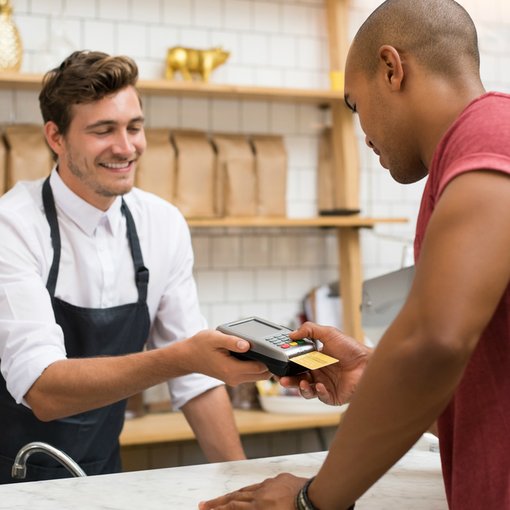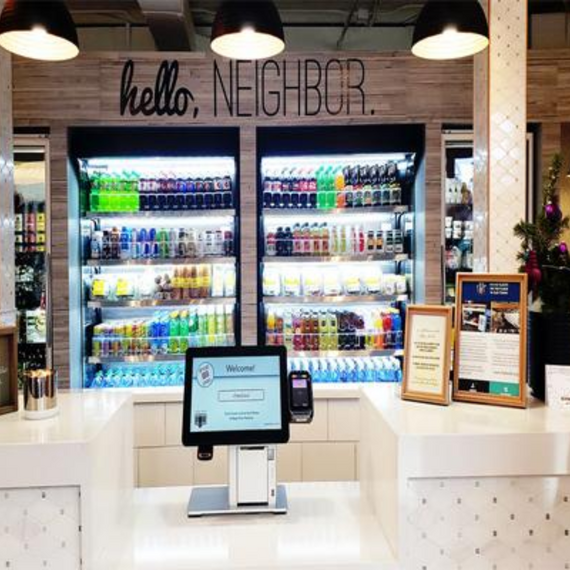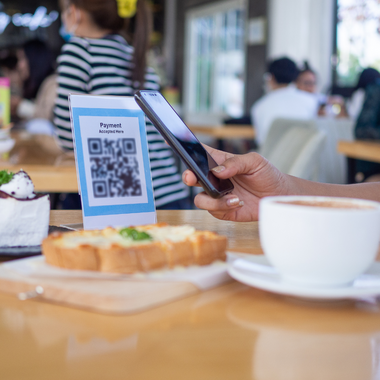
- Six minutes read
How SMBs are reshaping their checkouts
Enhanced payments solutions are helping businesses become more efficient, win customers, and ultimately grow their bottom line. Here’s how.
For small to mid-sized businesses (SMBs) in the U.S., the landscape has never been so complex. And this is especially true when it comes to accepting and managing payments. Over the past decade the evolution of the checkout has been rapid, and the pace of change is only increasing. Understanding how and why the world of payments is shifting is becoming even more relevant for SMBs to grow their bottom line through increased sales and efficiencies. Here are some of the ways that the checkout is being reshaped today:
Coping through the pandemic
While we’re not out of the woods yet, despite eased restrictions around mask mandates and increased availability of vaccines, the impact of the COVID-19 pandemic cannot be underestimated. Throughout the early days of this global health crisis, which were littered with lockdowns, restrictions, and understandably cautious customer behavior, SMBs have had to quickly adapt to a new way of offering goods and services to avoid closing down business entirely. For brick-and-mortar businesses, re-imagining the customer experience in-store to protect customer safety has been the bare minimum; many switched their model to online sales and other options that enable customers to buy products without needing to enter the store, including offering home delivery services or curbside pick-up.
Last October, we asked SMBs across the U.S. to tell us about the decisions they had made due to the pandemic. We found that seven out of ten (71%) of U.S. SMBs that predominantly sell products in-store also accept customer payments online through a website or app, but of these only a third (35%) launched their physical and digital checkouts at the same time. A fifth (20%) launched their online checkout directly as a consequence of COVID-19. Of those that don’t currently allow customers to pay online, 50% have no plans in the pipeline to launch an online presence in the future. On the other hand, close to a third (29%) want to be online within the next 12 months.
However, despite this shift, only 17% of SMBs told us that they were seriously considering closing their stores and becoming an online-only business in the future. At the same time, though, 42% believe the impact of COVID-19 on their business model will be permanent. So, we’re expecting most businesses to maintain the new models they have put in place since the pandemic and evolve their customer experiences that may be distinct currently into a single offering. From a payments perspective, this means developing an omnichannel checkout solution that fully supports the evolution of the customer experience online and in-store whilst providing SMBs with an accessible and simplified view of their customer data and behaviors as they look to expand on two fronts.
The evolution of technology
The enhancement in checkout technology over the past decade has been significant, and many SMBs both understand the value of the developments and are actively putting them to use. In October 2021 we surveyed 200 SMBs that primarily sell products or services through physical stores to find out more about the tech they were employing. From this survey, close to three quarters (71%) told us that having the most up-to-date payments technology is a priority for their business.
Take Point of Sale (POS) solutions for example. SMBs that have integrated a POS solution are accepting payments more than any other function, but many also use accounting services (38%), inventory management (37%), gift cards (36%), loyalty programs (32%), customer marketing (28%), and reputation management (23%) as well.
That is because efficiency and maintaining greater control over the business are the two benefits SMBs cite most frequently when they are asked how an integrated POS helps their business. Unlocking the value of POS solutions comes from harnessing new integrated technologies to drive growth and business management across the enterprise.
Overall, almost half (47%) of all SMBs said that they already operate an integrated smart point of sale solution such as Clover or Lightspeed, but perhaps more revealing is another 38% say they plan to add this to their checkout within the next 12 months.
But integrated POS isn’t the only enhancements we’re seeing. Other technologies making an impact at the checkout by bringing multi-functionality and efficiency to businesses processes include:
- Smart devices and mobile POS systems with the flexibility to be used in-store or on the go, even when WiFi is not available
- Terminals developing from being linear in functionality to now being multi-functional
- Business management apps (both general that can be used by all SMBS and specialized for specific industries) that are easy to use, powerful and sometimes even free
- SaaS based solutions that are more affordable and robust in functionality
A new relationship with cash?
But the move to an omnichannel model isn’t the only consequence of the pandemic. Another impact we’ve seen on the checkout is the emergence of a new relationship with cash payments. 90% of SMBs told us that they currently accept cash payments and plan to continue offering cash as a payment option in the future. So, it’s clear that despite the rapid growth of contactless payments during COVID-19, we don’t expect to see cash disappear any time soon. In fact, many of the SMBs we surveyed told us that there are a number of reasons for this:
- It is important to them to offer the greatest number of payment methods to their customers
- Some customers prefer to use cash
- Some customers don’t have a bank account and so are reliant on cash
- It is easier for them as a business to accept cash payments
Alongside reduced processor fees, each bullet provides further insight as to why we are seeing more SMBs move to a cash discounting model. As contactless payments become the norm for many Americans, businesses are choosing to incentivize cash payments to drive incremental revenues from customers that are price sensitive, particularly as inflation continues to apply pressure on consumers and businesses alike. Instead of running away from cash, SMBs are using it to actively win customers.
The right payment partner
It’s clear that while many trends have evolved since the onset of the pandemic and continue to do so as businesses focus on their recovery strategies, payments remain a critical element of their that SMBs must get right to stay competitive. Understanding how the landscape is changing, what technology is available, and what is right for the business is essential, which means working with the right payments partner to maximize the effectiveness of their checkout.




